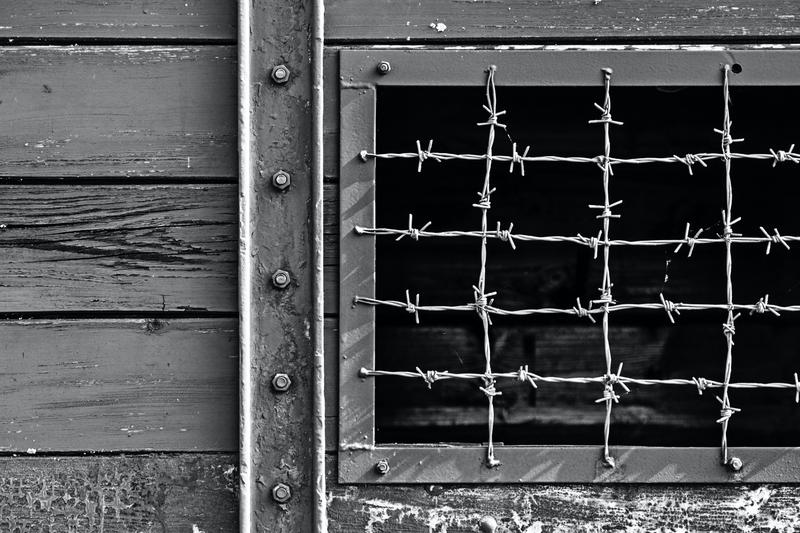by Elisabeth Aiken
August 23, 2022
Elisabeth Aiken lives and teaches in central Florida. In addition to teaching American literature, her research interests include Appalachian and environmental literature as well as the intersections of ecocriticism and postcolonial studies. When she's not in class at Saint Leo University, she can be found reading or playing outside with her family.
The Ghetto Within by Santiago H. Amigorena; HarperCollins Publishers; 176 pages; $26.99
To simply call Santiago H. Amigorena’s award-winning The Ghetto Within a novel about the World War II does not acknowledge the intricacies or nuances that this work explores. This short novel, which blends autobiography with biography and memoir with history using primarily third person omniscient narration, is a barely-fictionalized account of the author’s great-grandfather and his experiences as a Polish and Jewish expatriate living in Buenos Aires between 1940-1945 with his wife and three children. Having left Warsaw years earlier, in 1940 Vincente Rosenberg runs a furniture store subsidized by his father-in-law during the day, and he spends his evenings visiting with other Polish expatriates before returning home to his family. He has sporadically exchanged letters with his mother, who, despite his tepid attempts to convince her to join him and his family in Buenos Aires, remains in Poland with Vincent’s brother. Vincente’s life is pleasant; he is happily married, dotes upon his children, and is financially stable through the furniture store. Vincente often ruminates upon his past, particularly upon his academic love for German language, culture, and poetry, and these episodes are a source of tension unacknowledged by Vincente himself. He is content to deliberately avoid news of the war—until, as the months and years roll on, he begins receiving more letters from his mother, chronicling their increasingly dire situation. In addition to her rare letters, Vincente follows events via newspapers as Jewish Poles are first confined to a limited ghetto, then increasingly hungry and under attack—before being removed and ultimately murdered in concentration camps.
While Vincente’s emotional withdrawal from his family implies the presence of “the ghetto within,” these dreams emphasize for readers the severity of the trauma and guilt that lead to his suffering. Vincente’s retreat from his full life continues until he intuits that his mother has been deported to Treblinka II, a camp that “had been an implacable machine designed to kill as many people as possible as swiftly as possible” (153). Vincente’s anguish is so complete that he determines to take his own life. Rosita discovers his attempt and interrupts with the news that she is pregnant. The novel moves quickly from this point: Vincente slowly resurfaces into his life, though he never speaks of the Holocaust.
Amigorena offers details of Vincente’s life in a style that is both succinct and reminiscent of Impressionism. Stylistically, this work leans towards stream of consciousness as readers are plunged into Vincente’s internal world; whether a deliberate obfuscation by the author or a weakness of the translation, at times the chronology is difficult to follow. Amigorena occasionally provides dates of significance that help readers move within the chronological structure of the novel, and the provision of historical context provides details that Vincente could not have known at the time, but remain chilling for contemporary readers.
Knowledge of the unfolding events is a central theme that guides this novel: what Vincente knows, and when and how he knows, is balanced with his changing desire to know. A second central theme Amigorena explores is identity: Vincente’s Jewish identity changes and grows throughout the course of the novel. Early in the text, Vincente asks himself “ ‘Why have I never been a Jew in the way that I am today—today when it is all that I am?’ Like all Jews, Vincente had believed that he was many things before the Nazis showed him that he was defined by a single thing: being Jewish” 51. His connections to his past life in Poland and his Jewish heritage become his defining identity, and as Vincente disengages from his life in Buenos Aires, he becomes a ghost, seeking either answers or relief from his guilt that will never come. Just as Vincente disengages from characters in his daily life, the narration offers few answers or emotional connections. There is a distance between reader and Vincente, and though the novel itself offers a connection, there is silence there, too.
While the narrator reveals himself and his relationship to Vincente and Rosita in the concluding chapter, readers are not provided with a satisfactory end to Vincente’s story. Though implied, readers do not learn conclusively whether he returns emotionally to his marriage and family, or whether he continued his internal retreat during the last decades of his life. The result is that Vincente is allowed to retreat fully, and permanently, into silence. Readers’ questions are unanswered, and the effect is unsettling. Perhaps, though, this effect is intentional: any expectation of a satisfactory ending is rightfully shattered by the enormity of loss and grief.
The Ghetto Within is an introspective novel, as contemplative and, at times, as quiet as its main character. This work succeeds at taking readers on an internal journey into Vincente’s own personal ghetto: enclosed by four walls, inhabited by silence and guilt, impenetrable by any who know and love him.
©2022 West Trade Review
__________________________________________________________________________________________________________________________________________________________________________
__________________________________________________________________________________________________________________________________________________________________________
__________________________________________________________________________________________________________________________________________________________________________
__________________________________________________________________________________________________________________________________________________________________________
__________________________________________________________________________________________________________________________________________________________________________
Suffering in Silence: Watching the Holocaust from Afar in Santiago H. Amigorena’s The Ghetto Within
FICTION REVIEW
Stay Connected to Our Literary Community. Subscribe to Our Newsletter
Image by Majkl Velner from Unsplash




